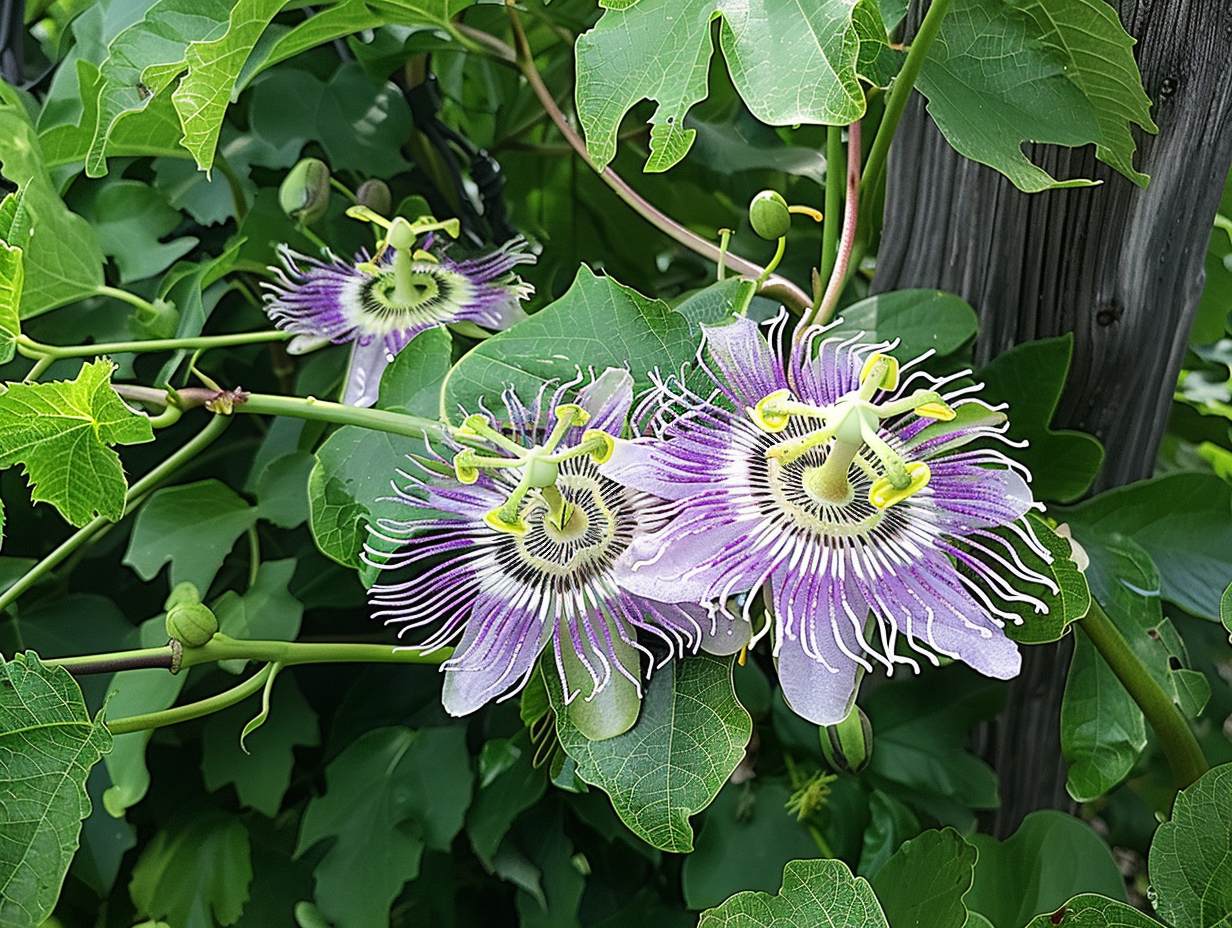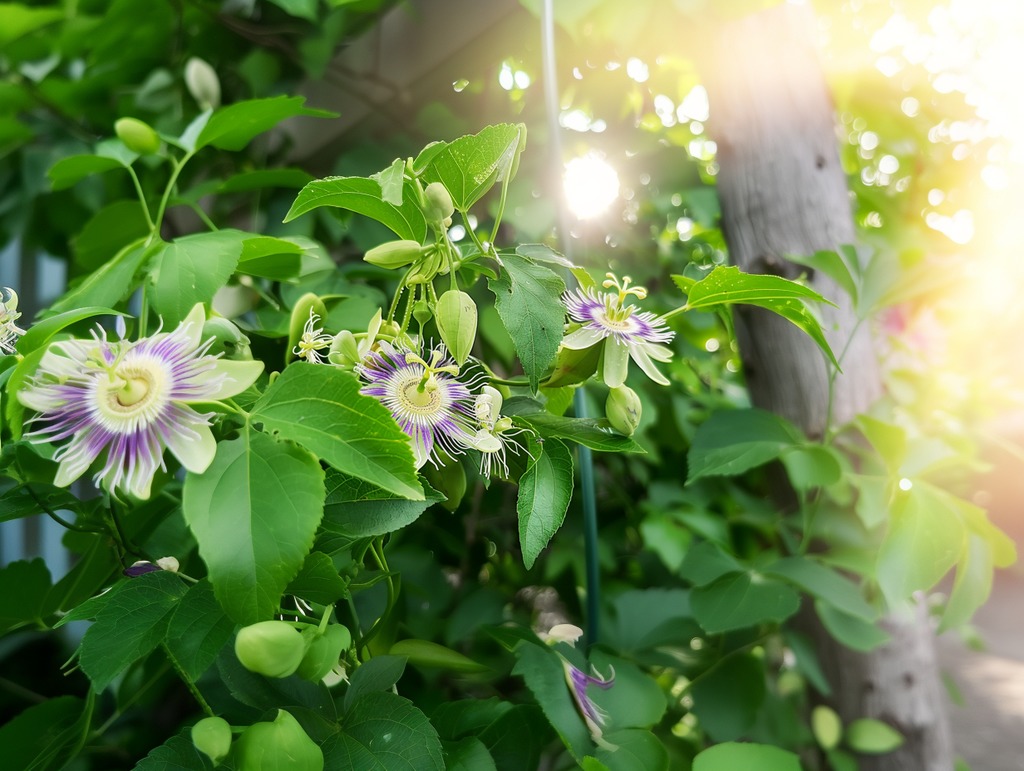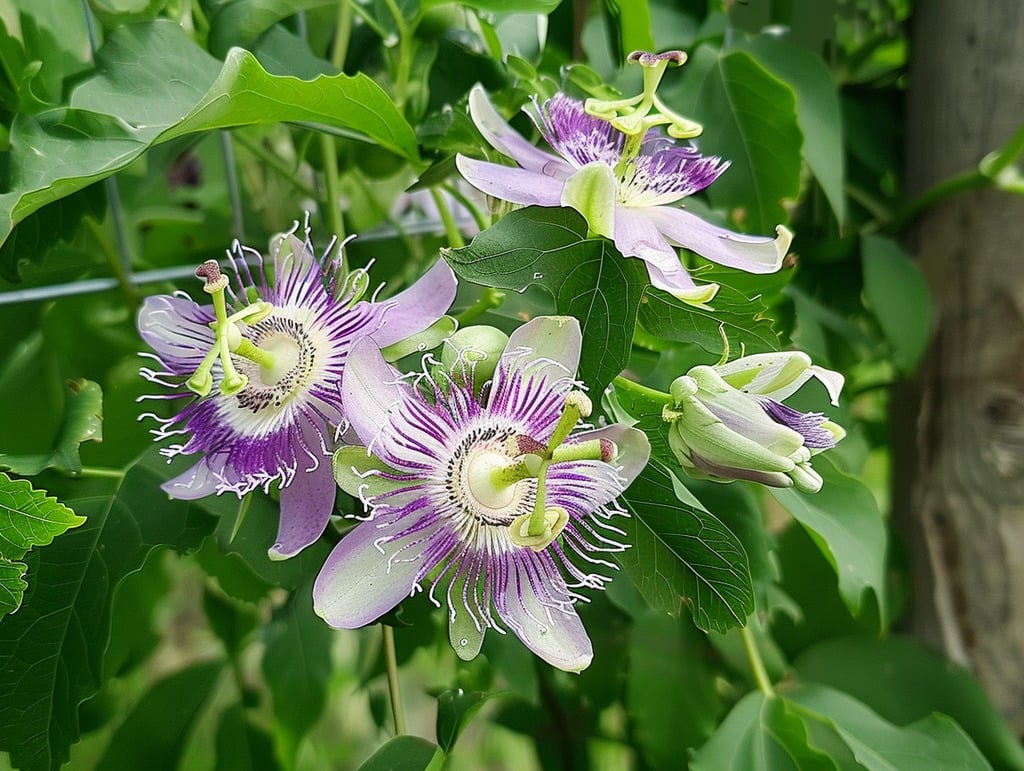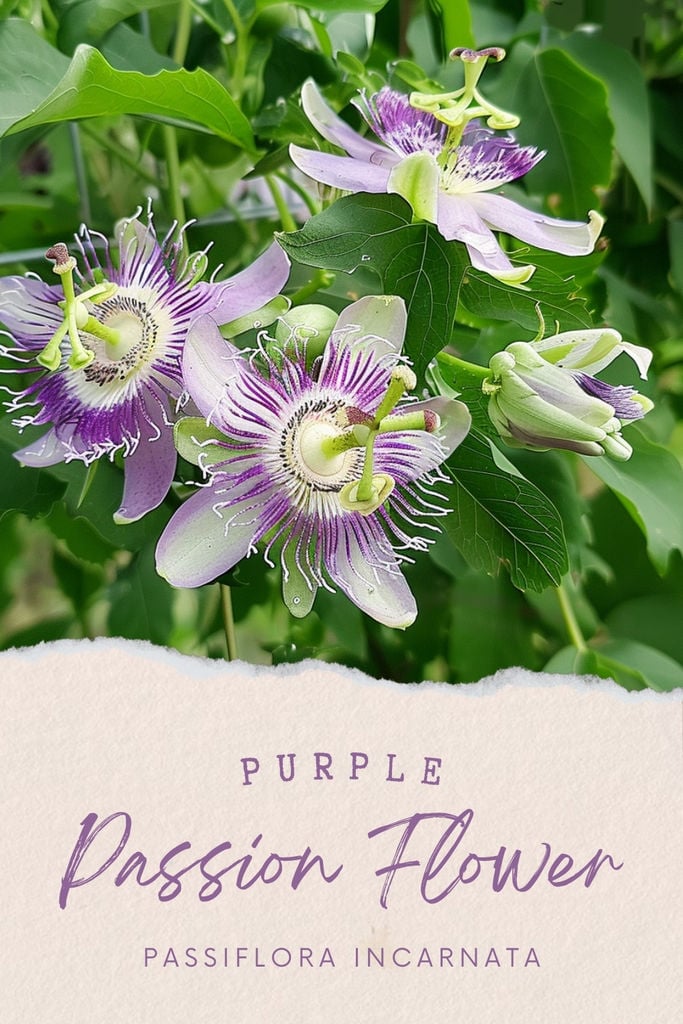Passiflora incarnata, commonly known as the Maypop or Purple Passion Flower, is a vibrant and intriguing native plant of North Carolina. From its fascinating historical roots to its versatile uses, this perennial vine offers both beauty and benefits. Let’s delve into its rich history, learn how to propagate and plant it, and explore its myriad uses.
Please note: The Cameron Team has not been paid or received any other compensation to include any of the products featured on this post, but the author has included affiliate links and content. If you click on a link, they may earn a commission – a high-five for great content!
History of Passiflora incarnata
Passiflora incarnata, as mentioned before, is also known as the Purple Passion Flower and it has a storied past. This captivating plant was named by early European explorers who were struck by its intricate flowers. The name “Passiflora” derives from the Latin word for passion flower, which was inspired by the flower’s resemblance to Christian symbolism, particularly the Passion of Christ.
Native Americans, including the Cherokee and other tribes, have long utilized Passiflora incarnata for its medicinal properties. They brewed teas from its leaves and roots to treat various ailments such as anxiety, insomnia, and pain. The plant also played a role in traditional culinary practices, with its fruit being consumed fresh or used in recipes.
How to Propagate Passiflora incarnata
Propagation of Passiflora incarnata can be accomplished through seeds or cuttings. Here’s how you can do it:
Propagation by Seeds
- Seed Collection: Harvest ripe fruits and extract the seeds. Clean the seeds thoroughly to remove any pulp.
- Stratification: To enhance germination, stratify the seeds by placing them in a moist medium (like sand or peat moss) and refrigerate for about 2-3 months.
- Planting: After stratification, sow the seeds in a well-draining potting mix. Keep the soil moist and place the pots in a warm, sunny location.
- Germination: Seeds typically germinate within 2-4 weeks. Once seedlings are large enough to handle, transplant them into individual pots.
Propagation by Cuttings
- Selecting Cuttings: Choose healthy, non-flowering shoots in late spring or early summer. Cut a 4-6 inch segment just below a node.
- Preparation: Remove the lower leaves from the cutting, leaving a few at the top. Dip the cut end in rooting hormone to encourage root development.
- Planting: Insert the cutting into a pot filled with a well-draining potting mix. Keep the soil moist and cover the pot with a plastic bag to maintain humidity.
- Rooting: Place the pot in a warm, bright location but out of direct sunlight. Roots should develop in 4-6 weeks, after which the cutting can be transplanted.
How to Plant Passiflora incarnata
Planting Passiflora incarnata requires some attention to detail to ensure healthy growth. Follow these steps:
- Site Selection: Choose a location with full sun to partial shade and well-draining soil. Passiflora incarnata thrives in rich, loamy soils but can adapt to various soil types.
- Soil Preparation: Enrich the planting site with organic matter such as compost to improve soil fertility and drainage.
- Planting: Dig a hole twice the width of the root ball and just as deep. Place the plant in the hole, backfill with soil, and water thoroughly.
- Spacing: Space plants about 3 feet apart to allow for adequate air circulation and growth.
- Support: Provide a trellis or support structure for the vines to climb. This will encourage healthier growth and more abundant flowering.
Uses of Passiflora incarnata
Passiflora incarnata is valued for its ornamental, medicinal, and culinary uses:
Ornamental Use
With its striking purple flowers and lush green foliage, Passiflora incarnata is a favorite in gardens and landscapes. It attracts pollinators like bees and butterflies, adding life and color to any setting.
Medicinal Use
Traditionally, Passiflora incarnata has been used to treat anxiety, insomnia, and pain. Modern research supports some of these uses, particularly its calming effects. It’s commonly available in teas, tinctures, and supplements.
Culinary Use
The fruit of Passiflora incarnata, known as maypop, is edible and can be eaten fresh or used in jams, jellies, and desserts. Its flavor is a unique blend of tart and sweet, making it a delightful addition to various recipes.
FAQs
Q: Is Passiflora incarnata easy to grow?
A: Yes, with the right conditions—full sun, well-draining soil, and adequate support—Passiflora incarnata is relatively easy to grow and maintain.
Q: Can Passiflora incarnata be grown indoors?
A: While it can be started indoors, Passiflora incarnata is best suited for outdoor growth where it can receive ample sunlight and space to climb.
Q: How long does it take for Passiflora incarnata to flower?
A: Typically, Passiflora incarnata will flower in its first year if planted in the spring. Consistent care and proper conditions can promote more prolific flowering.
Q: Are there any pests or diseases that affect Passiflora incarnata?
A: Passiflora incarnata can be susceptible to pests like aphids and spider mites, and diseases such as root rot if overwatered. Regular monitoring and proper care can mitigate these issues.
Wrapping Up
Passiflora incarnata is more than just a beautiful plant; it’s a piece of North Carolina’s natural heritage with numerous applications. Whether you’re interested in its historical uses, looking to add a unique plant to your garden, or exploring its medicinal benefits, Passiflora incarnata is a versatile and rewarding choice. Happy planting!






